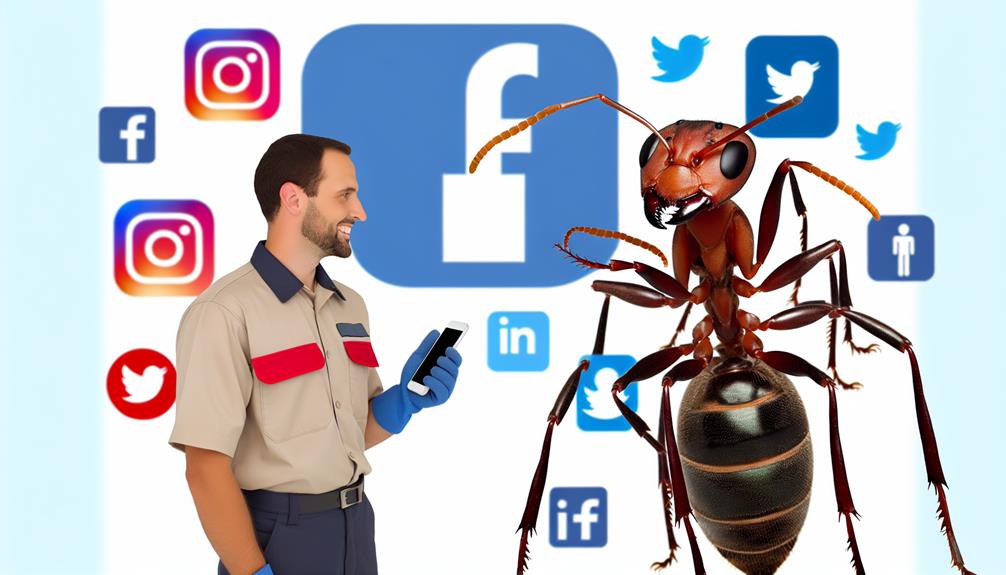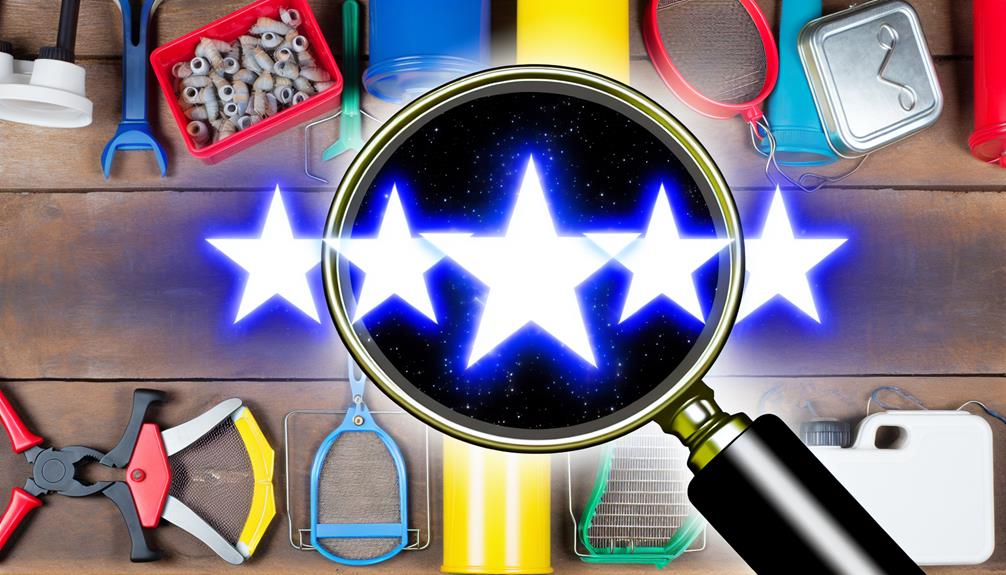Just by coincidence, you’re in the pest control business and you’re struggling to increase your online visibility, aren’t you? Well, you’re not alone. Many businesses in your industry find themselves in the same predicament, unsure of how to navigate the ever-changing landscape of search engine optimization (SEO).
But don’t worry, we’ve compiled a list of 14 essential SEO tips specifically tailored for pest control businesses. These strategic insights will not only boost your online presence, but also help you dominate local search results.
Stay tuned to uncover these invaluable tips, and get ready to see your business climb up the search engine ranks.
Table of Contents
ToggleUnderstanding SEO for Pest Control

To boost your pest control business’s online visibility, it’s crucial to grasp the nuts and bolts of Search Engine Optimization (SEO). It’s not just about sprinkling keywords in your content; it’s a strategic move that involves understanding SEO analytics and conducting a thorough competitor analysis.
SEO analytics can show you a wealth of data about your website’s performance. You’ll see which keywords are driving traffic to your site, how long visitors are staying, and which pages are the most popular. This information is vital to fine-tune your SEO strategy, identifying what’s working and what isn’t.
Then there’s competitor analysis. You’re not alone in the pest control industry, and your competitors are likely using SEO too. By analyzing their strategies, you can identify opportunities to outperform them. Look at the keywords they’re targeting, the structure of their website, and their backlink profile. This will give you insights into what you’re up against and how you can gain an edge.
Importance of Keyword Research
Undoubtedly, investing time in keyword research is a critical step in optimizing your pest control business’s online presence. It’s the foundation of SEO strategy, helping you understand what your potential customers are searching for online.
- Identify your audience’s language: Keyword research allows you to tap into your customers’ language, helping you make your content resonate with them. By understanding their search habits, you can tailor your content to match their needs.
- Optimize Keyword Density: Balancing keyword density is crucial. Over-stuffing your content with keywords can lead to penalties from search engines, while not including enough can make your content invisible.
- Leverage Long-Tail Keywords: Long-tail keywords, while less common, can be incredibly valuable. They’re more specific, and users who search with them are often closer to a purchase decision.
- Outrank Competitors: By researching and implementing the right keywords, you can improve your rankings and outrank competitors.
Optimizing Your Website’s Speed

Ensuring your pest control business’s website loads quickly can significantly improve user experience, potentially boosting your SEO rankings. You’d be surprised how much a few extra seconds of loading time can affect user engagement. A slow website can turn potential customers away, damage your site’s reputation, and ultimately hurt your business.
Site architecture plays a crucial role in enhancing your site’s speed. Think of it as the foundation of your site. A well-structured, user-friendly site makes it easier for search engines to crawl and index your pages, leading to improved SEO performance. Therefore, it’s important to keep your site structure simple and organized.
Image optimization is another key aspect of website speed optimization. High-resolution images can dramatically slow down your site’s loading speed, so you need to strike a balance between quality and load time. Compress your images without losing quality, and ensure they’re properly formatted.
Mobile-Friendly Website Design
While you’re optimizing your site’s speed and structure, don’t overlook the importance of a mobile-friendly design in today’s digital age. A mobile-friendly website isn’t just a luxury; it’s a necessity. With more than 50% of web traffic coming from mobile devices, you can’t afford to ignore the responsive design benefits.
- Improved User Experience: Mobile-friendly designs provide an optimal viewing experience on different devices. Users don’t need to zoom or scroll excessively to view content.
- Increased Time on Site: If your site is easy to navigate on mobile, visitors are likely to spend more time exploring your pest control services.
- Reduced Bounce Rate: A site with mobile navigation optimization keeps visitors engaged, reducing the chances of them leaving your site prematurely.
- Improved SEO Rankings: Google prefers mobile-friendly sites. Without a responsive design, your pest control business may not rank as high in search results.
Local SEO Strategies

Diving into local SEO strategies can give your pest control business a significant edge in the local marketplace. To begin, effective geo-targeting practices are crucial. These help to focus your online content and advertising efforts in specific geographic areas where your potential customers are located. You’ll want to ensure that your business is appearing in local search results and online directories.
Next, competitor analysis is an invaluable tool. Understanding what your local competitors are doing online can provide insights into successful strategies and potential areas for improvement. Examine their websites, their SEO tactics, the keywords they’re using, and their presence on social media and review sites.
Tracking SEO Performance
After establishing a robust local SEO strategy and engaging with your community, it’s crucial to monitor the performance of your SEO efforts to ensure long-term success. You’ve planted the seeds, now it’s time to watch them grow and adapt as necessary. Performance analytics and competitive benchmarking are the tools that’ll help you do just that.
Here are some essential steps to keep track of your SEO performance:
- Use SEO Analytics Tools: Performance analytics tools like Google Analytics provide valuable insights into your website’s traffic, user behavior, and conversion rates.
- Monitor Keyword Rankings: Keep an eye on where your website ranks for targeted keywords. This will give you an idea of your website’s visibility in search engines.
- Competitive Benchmarking: It’s not enough to only focus on your own progress. Compare your performance with competitors to identify areas of improvement and potential opportunities.
- Regular Reporting: Don’t just measure once and forget about it. Regular reporting will help you understand trends, monitor changes, and make informed decisions.
The Role of Backlinks

In the complex world of SEO, backlinks play a pivotal role, serving as votes of confidence from other sites and thus boosting your pest control business’s visibility on search engines. Backlink acquisition is vital to your online strategy. When credible, high-ranking websites link back to your site, search engines view your site as more authoritative, enhancing your rankings.
But how do you go about acquiring these valuable backlinks? It’s all about smart link building strategies. You can’t just sit back and hope other sites will link to yours. You’ve got to be proactive. Start by creating high-quality, informative content that others will want to link to.
Reach out to other relevant businesses or blogs in your industry, suggesting a mutual backlinking agreement. Don’t forget about social media. Sharing your content on these platforms can encourage others to link back to your site. Guest posting on industry blogs or websites can also be a great way to get backlinks.
Keep in mind, quality over quantity is key in backlink acquisition.
Creating Quality Content
Building on the idea of backlinks, let’s now focus on the bedrock of any successful SEO strategy — creating quality content. Remember, quality always trumps quantity. But, content frequency is also crucial. Consistent, high-quality posts tell search engines that your site is relevant and up-to-date.
Here are four essential steps to creating quality content:
- Know Your Audience: Understand who you’re writing for. Audience targeting is critical to ensure your content is relevant and engaging for your readers.
- Be Informative: Your content should provide value. Share your expertise in pest control, offer tips, or discuss common problems and solutions.
- Use Keywords Strategically: Don’t stuff articles with keywords. Incorporate them naturally into your content. They should enhance, not detract from the readability.
- Maintain Consistency: Regularly post high-quality content. This demonstrates to search engines that your site is active and relevant.
Utilizing Social Media

Now that you’re steadily producing high-quality content, it’s time to leverage the power of social media to amplify your reach and improve your pest control business’s SEO efforts. Social media platforms can significantly increase your online visibility, drive more traffic to your website, and earn you higher rankings in search results.
Crafting a strategic social media plan is fundamental. It’s not just about posting regularly; it’s about engaging with your audience, showcasing your expertise, and building trust. Influencer collaborations can be a powerful tool here. Identify influencers in your niche, engage with them, and explore opportunities for collaboration. A single shout-out from an influencer can expand your reach exponentially.
Never underestimate the power of social media advertising. Paid advertising on platforms like Facebook, Instagram, or LinkedIn can help you target your specific customer demographics more effectively. Tailor your ads to highlight the unique selling points of your pest control services. Remember to include relevant keywords in your ad copy to enhance your SEO strategy.
Importance of User Experience
User experience, a key driver of digital success, can’t be overlooked when optimizing your pest control business’s website for SEO. It’s not just about ranking higher, but also about providing value to your customers.
- User Navigation: Make it easy for visitors to find what they’re looking for. Simplify your menus, clearly label your pages, and ensure your search function works seamlessly. These steps will improve user navigation and keep your customers on your site longer.
- Engaging Visuals: Images, infographics, and videos can make your content more appealing and easier to understand. Use these elements to break up text, explain complex ideas, or highlight your services.
- Page Load Speed: Slow loading times frustrate users and lead to higher bounce rates. Optimize your images, reduce server response time, and streamline your CSS.
- Mobile-Friendly Design: With more people using their phones to browse the web, it’s crucial your site is mobile-friendly. Responsive design ensures your site looks great on any device.
SEO and Google Maps Integration

While enhancing user experience remains paramount, another significant step in bolstering your pest control business’s SEO strategy is integrating with Google Maps. This integration not only widens your online visibility but also connects you directly with potential customers in your area.
Firstly, you must understand Google Maps ranking factors. These include relevance, distance, and prominence, all of which collectively determine your business’s map ranking. To optimize your ranking, ensure your Google My Business listing is accurate, and complete with your business name, address, and phone number.
Additionally, employing effective map optimization techniques is essential. Regularly update your business hours, respond to reviews, and add relevant photos. This not only improves your ranking but also enhances your business’s credibility.
Another technique is embedding Google Maps on your website. This facilitates user navigation to your business location, enhancing user experience while also sending positive signals to Google about your relevance and authenticity.
Making Use of Google My Business
Leveraging Google My Business can significantly ramp up your pest control business’s SEO performance, making you more visible and accessible to your potential customers. It’s an effective tool that allows you to manage your online presence across Google, including Search and Maps.
To make the most of Google My Business, you should focus on:
- Profile optimization: Make sure all your business information is accurate and up-to-date. This includes your business name, address, phone number, hours of operation, and services. Don’t forget to add high-quality photos of your business, too.
- Review management: Encourage your customers to leave reviews. Respond to these reviews in a timely and professional manner, whether they’re positive or negative. This won’t only boost your reputation but also your SEO.
- Post updates regularly: Keep your customers informed about any changes, special offers, or events. This will keep your profile fresh and engaging.
- Use Google My Business Insights: This feature allows you to understand how customers find your business, where they’re coming from, and what they’re interested in.
These steps will help you to maximize the benefits of Google My Business, giving your pest control business a significant online boost.
The Power of Customer Reviews

In the realm of SEO, never underestimate the powerful impact customer reviews can have on your pest control business’s online visibility and reputation. Positive testimonials from your customers can significantly boost your search engine rankings and foster trust with potential clients.
Review authenticity is key here. Consumers can spot fake reviews from a mile away, and they’ll quickly lose trust in your business if they suspect your testimonials aren’t genuine. Encourage your satisfied customers to share their experiences on various review platforms. Not only does this create a diverse and trustworthy collection of testimonials, but it also increases your visibility on these platforms.
Make sure to respond to all reviews, whether positive or negative. This shows that you’re engaged and care about your customers’ experiences. Remember, one negative review handled well can do more for your reputation than a dozen unacknowledged positive ones.
Lastly, integrate these reviews into your website. This not only provides fresh, keyword-rich content for SEO purposes, but also gives potential customers an insight into the quality of your service.
Harness the power of customer reviews, and watch as your online presence grows.
Updating Your SEO Strategy Regularly
Just as you capitalize on the power of customer reviews, it’s equally essential to keep your SEO strategy updated and dynamic to maintain your pest control business’s online visibility. SEO isn’t a one-time effort; it requires consistent reviews and adjustments to keep up with algorithm updates and market trends. This calls for regular SEO audits to identify what’s working and what needs improvement.
Here are four crucial steps to keep your SEO strategy up-to-date:
- Regular SEO audits: Conducting SEO audits helps you understand your website’s current standing and the areas that need improvement.
- Stay updated on algorithm changes: Search engine algorithms change frequently. Keeping track of these changes ensures your SEO tactics align with the latest guidelines.
- Keyword research: Regularly update your keyword list to reflect your audience’s current search behavior.
- Content updates: Regularly update your website content to include new keywords and information relevant to your audience.
Conclusion
In the pest control industry, it’s not just about squashing bugs, but outsmarting Google’s algorithms too. Your business thrives on visibility, so never underestimate the potency of a well-optimized site, keyword research, and a customer review’s power.
Remember, a slow website and neglect of local SEO strategies can be as harmful as the pests you control. Stay adaptable, keep updating your SEO strategy, and you’ll keep your digital presence pest-free and thriving.





